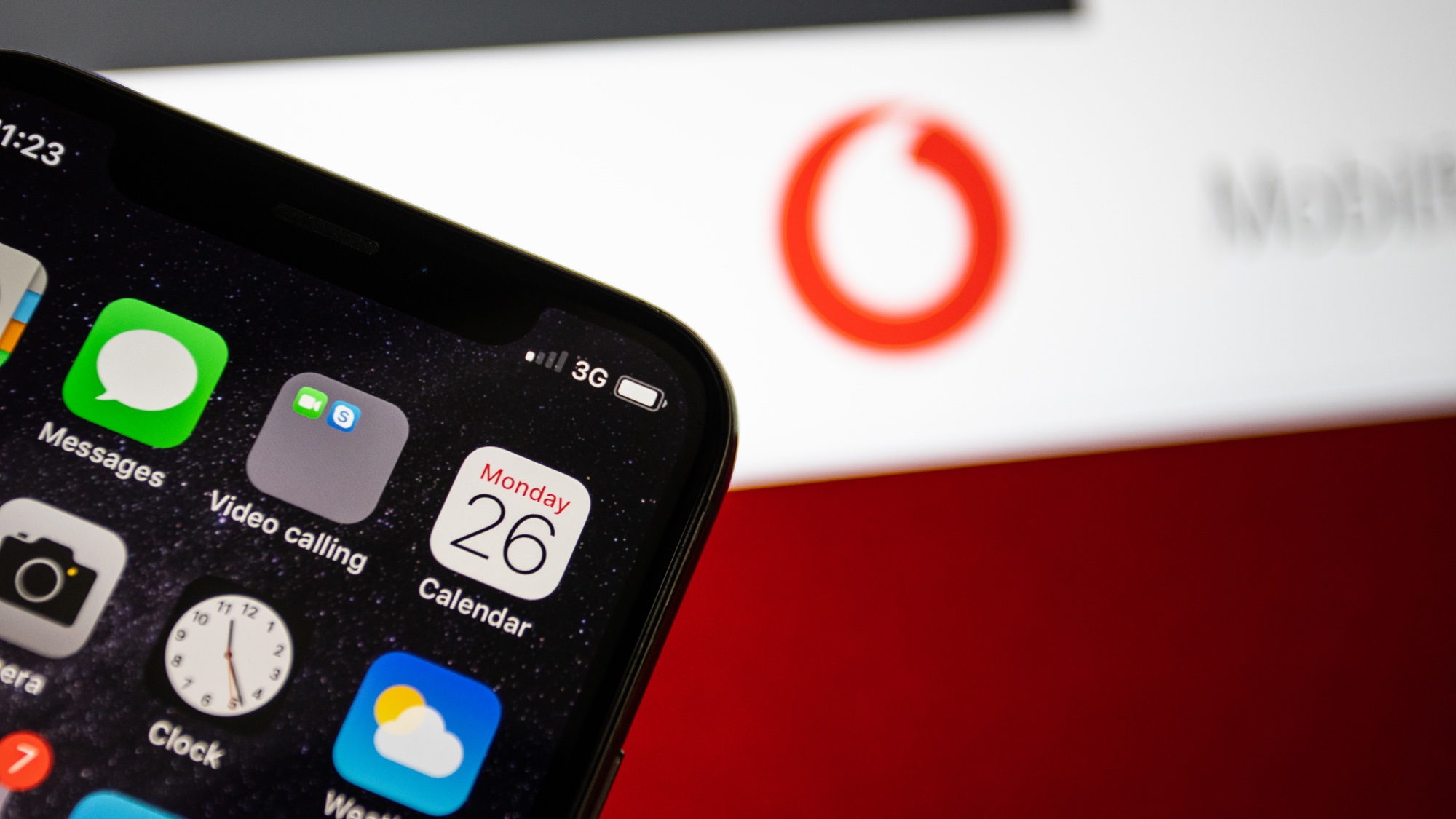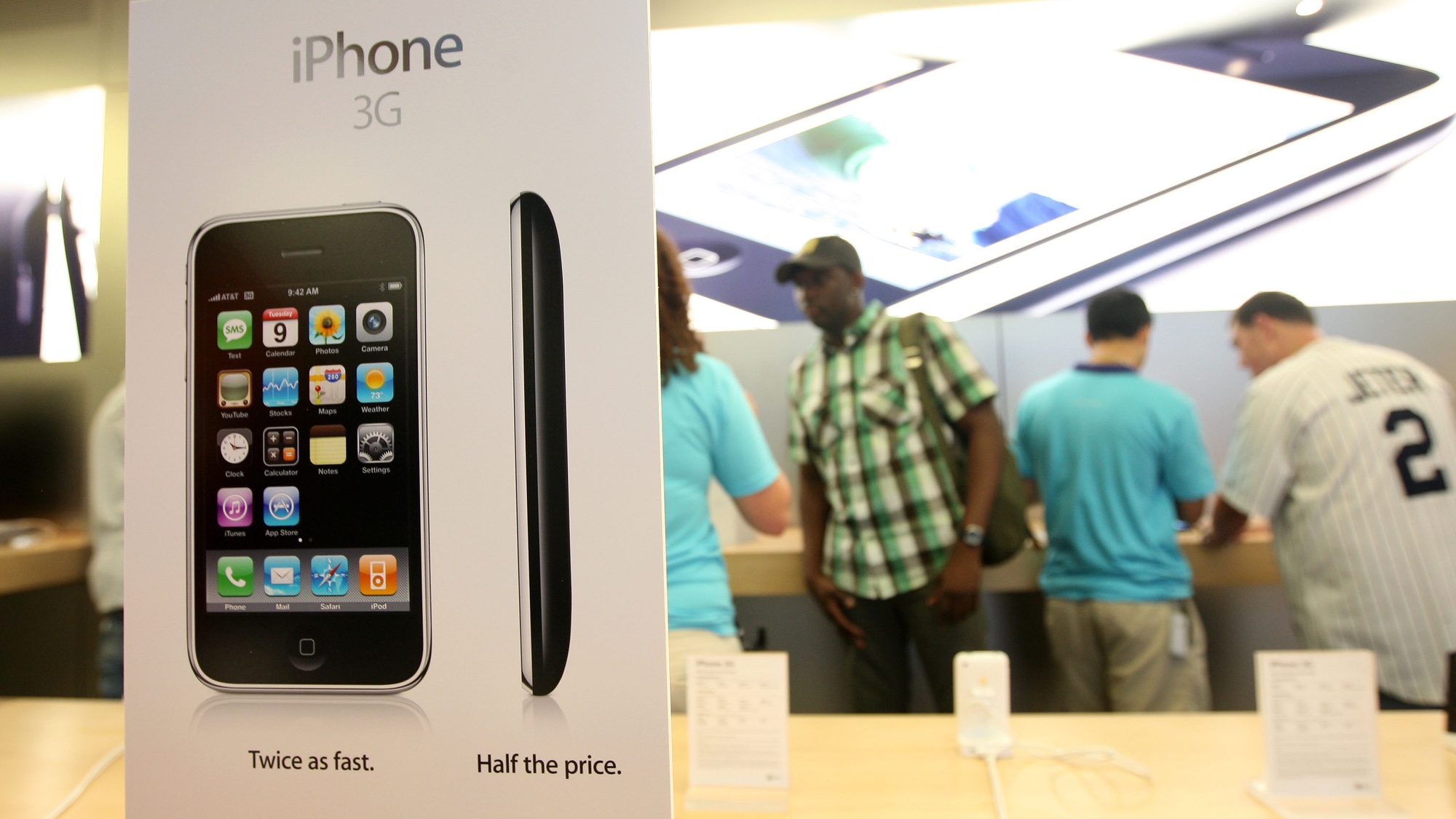3G networks are shutting down in 2022 — how it impacts you
The end of 3G impacts older phones and connected devices

3G is about to take its final bow. The wireless networking standard that ushered in the smartphone era is getting shut down in 2022, as carriers look to build up more current technologies.
That means devices that still rely on 3G — from smartphones to tablets to alarm systems — won't be able to connect anymore once carriers pull the plug on 3G. But the good news is this shutdown has been a long time coming, giving carriers and device makers plenty of time to ensure a smooth transition.
Here's what you need to know about the 3G shutdown and how it could impact you.
What is happening with 3G networks?
AT&T: February 2022
T-Mobile: March 2022 (Sprint); July 2022 (T-Mobile)
Verizon: Dec. 31, 2022
All the major wireless carriers in the U.S. are planning on shutting down their 3G networks in 2022, though some carriers are flicking the off switch sooner than others.
AT&T is first up, planning to turn off 3G in February. T-Mobile will first shut down Sprint's 3G network on March 31 — remember, the two carriers have merged with T-Mobile absorbing Sprint's customers — and T-Mobile's own 3G network is targeted for a July shutdown.
Verizon has pushed back its 3G shutdown date before, but as of December 31, 2022, the carrier claims its 3G coverage will be no more.
Keep in mind this doesn't just affect customers of those specific carriers. MVNOs, which turn to the networks of larger carriers to provide their wireless coverage, will lose access to 3G once the parent network shuts it down. So if you're a customer of Cricket Wireless, you won't be able to access AT&T's 3G network after it shuts down in February.
Sign up to get the BEST of Tom's Guide direct to your inbox.
Get instant access to breaking news, the hottest reviews, great deals and helpful tips.
Why are carriers shutting down their 5G networks?
There are efficiencies to be gained by not running three different networks. But, really, it comes down to spectrum.
— Jason Leigh, IDC
There are a couple reasons why carriers are ready to pull the plug on 3G, and the first comes down to progress. Commercial 4G networks first went live in 2009, and 5G followed a decade later. Throw in 3G, and that's a lot of different networks to keep up and running.
"There are efficiencies to be gained by not running three different networks," said Jason Leigh, research manager for mobility at IDC. "But really, it comes down to spectrum."
In other words, 3G connectivity uses parts of the wireless spectrum. If carriers no longer have to support their aging 3G networks, they can then reallocate that spectrum to other forms of connectivity.
"They need that spectrum they're using for 3G for more advanced services, for 4G and 5G," agreed Bill Menezes, a director analyst at market research firm Gartner.
3G uses low- and mid-band spectrum to keep devices connected. That's particularly valuable real estate, as that spectrum can travel greater distances than high-band spectrum and have an easily time penetrating buildings. That's been an area where 5G has fallen short, so carriers are likely to use that freed-up 3G spectrum to improve the reach of their growing 5G networks.
What phones will be affected by the 3G shutdown?
Most phones released in the past few years will work just fine after 3G networks go away. The key is to have a handset that supports voice over LTE, which would certainly cover any recently released phone as this has been the standard for a while.

• iPhone 5
• iPhone 5s
• iPhone 5c
• Samsung Galaxy S4
• Samsung Galaxy S III
• iPad 2
As an example, Leigh notes that Verizon stopped certifying 3G devices in 2018. That's three years ago, giving people plenty of time to upgrade to more modern equipment capable of connecting to LTE networks.
Still, while the number of phones affected isn't large, it's not an insignificant figure. Menezes cited a figure from AT&T back in September where the carrier said that 2.7% of its customers would be impacted by the 3G shutdown. With more than 195 million customers at the end of September, that would translate to around 5 million people.
Because carriers have known about this transition for a while, they've likely been in contact with customers whose phones will stop connecting to 3G at some point in 2022. Customers of the respective carriers can find information pages from AT&T, Verizon and T-Mobile. (The latter carrier also has information for former Sprint customers.)
The biggest impact may be on low-income household which don't have the means to upgrade to new phones at the drop of the hat. However, the Federal Communications Commission offers a Lifeline service that provides discounts on phone service for some low-income consumers. There's more information on that program on the FCC's own web page explaining the 3G network shutdown.
Other phones impacted may not necessarily be ones used for everyday connectivity. Leigh notes that his father keeps an old flip phone in the glove compartment of his car to stay connected; that backup phone will likely need to be replaced before 3G goes away.
Are there any other devices that are going to be affected?
My guess is the minority of [affected 3G devices] are handheld phones. Most are internet-of-things devices.
— Bill Menezes, Gartner
The 3G shutdown affects more than just phones. Other devices make use of 3G connectivity, too, and because they're not upgraded as frequently as phones are, the impact of 3G networks being turned off will be more acute.
"My guess is the minority of [affected 3G devices] are handheld phones," Menezes said. " Most are internet-of-things devices."
Specifically, connected devices ranging from car navigation systems to home security systems to medical equipment all rely on 3G. So do older tablets and e-readers that offer cellular connectivity — again, not the sort of devices you're likely to update with the frequency of smartphones.
There's a good news/bad news aspect to connected devices that rely on 3G. The bad news is that the burden likely falls on you to contact service providers to see if impacted devices are upgradeable. But on the bright side, those service providers and device makers have known well in advance that this shutdown was coming.
"They've known about this for years, so I imagine they've been working on it," Menezes said.
One possible exception may be makers of alarm systems who sounded alarms of their own this year that COVID-19 pandemic had slowed down their ability to go into homes and make sure that systems were updated. Again, that's something you'll need to check with your home security service prior to the 3G shutdown.
Is 3G also shutting down in other parts of the world?
The U.S. is actually several years ahead of the rest of the world in sunsetting its 3G network, IDC's Leigh said. That could create some awkward situations for travelers from overseas who might be expecting to bring their 3G phones on trips to the U.S. and pop in a local SIM card. Once the 3G networks are turned off, those phones won't work in this country.
As for other parts of the world, in the U.K., wireless carriers EE and BT are both targeting 2023 to turn off their 3G networks. The British government is aiming to have eliminated both 2G and 3G by 2033 at the latest.
Read next: The fastest mobile network in the US just might surprise you.
Philip Michaels is a Managing Editor at Tom's Guide. He's been covering personal technology since 1999 and was in the building when Steve Jobs showed off the iPhone for the first time. He's been evaluating smartphones since that first iPhone debuted in 2007, and he's been following phone carriers and smartphone plans since 2015. He has strong opinions about Apple, the Oakland Athletics, old movies and proper butchery techniques. Follow him at @PhilipMichaels.

